It is critical to keep your food fresh, safe to consume, and delicious, especially if you provide meal delivery services. It’s critical to think about your product packaging when it comes to ensuring the freshness of your food. It is critical to choose the correct packaging material and design whether you are a gourmet restaurant, coffee shop, quick food chain, or grocery store.
To be competitive in today’s competitive market, you must design and implement food packaging strategies that not only follow health and safety rules but also fulfill marketing standards that will thrill your consumers and put you ahead of the competition.
Let’s take a look at how to package food for delivery the right way.
What to Look For in Food Delivery Packaging
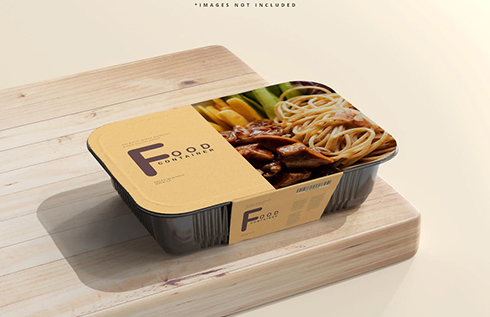
It’s critical to address your packaging demands before we get into the intricacies of how to package various foods properly. Consider the sort of food your business offers and how it will travel when determining the type of packaging to buy. Consider the accompaniments to each item on your menu.
You’ll probably need packaging for a variety of goods, including drinks, side dishes, sauces, tiny snacks, and so on. There are five features you should look for in packaging in general.
Particularly, in a delivery-only restaurant, the food you provide is still one of the most important factors in distinguishing your brand from the competition. Food packaging, on the other hand, is crucial because it attracts customers’ attention and promotes a positive brand image.
The major goal of packaging, on the other hand, is to protect food from infection, maintain proper food temperatures, and keep it from spilling. When done correctly, packing may help you maintain the high level of quality you want to be renowned for while also improving the entire consumer experience.
Innovative food packaging designs and package graphics are being emphasized by restaurant companies. This is done in the hopes of capturing clients’ attention and reinforcing a favorable brand image. The outside look of your food packaging also reflects the personality of your company.
As a result, carefully select colors, emphasize the brand, use unique captions, and include calls-to-action encouraging visitors to share their dining experience on your website and social media. This will make your business stand out while also providing a personalized experience.
Durability
Look for heavy-duty take-out containers. You want your excellent cuisine to arrive at the customer’s house safely. Remember that these containers will be transported in a car and will most likely be pushed up, down, and all over the place. Pack your food so that it looks its best no matter what happens.
One of the most important functions of food packaging is to keep the dishes intact by keeping the right temperature. This may be accomplished by investing in high-quality food delivery packaging.
To keep the meals safe, choose a tamper-proof packing material. To keep the beverages from spilling, use tight-fitting lids. If you have your own delivery fleet, supply them with insulated hot and cold bags to aid in keeping your food containers at the proper temperature.
Reliable Hygiene
To keep food safe, it’s critical to store it appropriately. Food stored in sealed containers at the proper temperature is safe from dangerous germs, prevents things from falling into it, and prevents cross-contamination with other components.
Maintain an environmentally conscious company that uses recyclable and biodegradable packaging with also keeping in mind hygiene. These days, more and more customers are becoming aware of the negative effects of non-biodegradable packaging. You must also be aware of the same and make your brand’s image as such.
Sustainability
Consumers are growing more aware of environmental issues these days. Restaurants have begun to address these issues by implementing packaging and other precautions.
Going green with your packaging sends a positive message to your customers that you care about the environment and are doing steps to improve it.
If you haven’t already done so, it’s recommended that you make the switch to organic, reusable, and biodegradable packaging, as many restaurants have already done.
As the demand for food delivery develops, meal packing is becoming increasingly critical in order to give the best possible customer experience.
Customers’ perceptions of a product are influenced by its packaging for a long time. Choose packaging that goes with the theme of your shop and successfully communicates your brand to customers.
Additionally, as much as feasible, utilize it to restore your clients’ trust following the epidemic, allowing you to maintain them.
User-Friendly
Choose your package with your buyer in mind. Check that they are easy to open and close and do not have any sharp edges. If you want to get extra points, pick containers that can be safely microwaved for simple leftover reheating.
As environmental concerns have risen, so has the use of recyclable materials in food packaging.
Some of the world’s major restaurant chains have abandoned single-use plastics in favor of biodegradable, recyclable, or reusable alternatives in response to consumer demand for ecologically friendly packaging.
Consider purchasing long-lasting, high-quality food delivery packaging. Bioplastic, which is made from renewable biomass, might be a great way to package dry or greasy foods.
Sustainable food packaging is a terrific way to improve your customer’s experience while simultaneously showing your worries about the environment.
Meal packing has grown into a useful tool for delivery-only restaurants to improve their customers’ meal delivery experience at home.
If you employ proper packaging, your customers will enjoy the ease of your shipping service. To boost your consumers’ experience and brand recall value, choose the right packaging materials and make smart design selections.
Logos & Branding
The most important reason to focus on food packaging is to effectively communicate your brand to your customers.
Following the outbreak, contacting clients has become increasingly difficult, leaving packaging as the only way of expressing your brand values to them.
A meal package featuring the outlet’s logo, name, and motto says a lot about the outlet to customers and helps them remember it the next time they shop online or eat out.
For cloud kitchens, food packaging is also crucial. Customers can only communicate with these delivery-only companies via their meal delivery packets and customization options of packages.
Restaurant firms are emphasizing innovative food packaging designs and package graphics.
This is done with the aim of grabbing the attention of customers and reinforcing a positive brand image.
If your brand is more well-known, customers will be more likely to purchase straight from your restaurant in the future.
Your company name or logo should be printed on the package at the absolute least so that it is visible to everyone who sees it.
The outward appearance of your food packaging also shows your company’s personality.
As a consequence, choose your colors carefully, accentuate your brand, use engaging captions, and add calls to action encouraging your diners to share their experience on your website and social media. This will help your company stand out while also giving them a unique experience.
If you’re stumped as to how to market your business, start with takeout packing. This is especially true because people are increasingly ordering through third-party apps rather than directly from companies.
By branding takeaway containers, you may help customers connect the food they’re eating with your business.
Common Materials for Food Delivery Packaging
Packaging materials are not all created equal. Choose ecologically responsible packing materials that meet your restaurant’s specific demands. Take-out packaging normally consists of three materials: styrofoam, cardboard, and plastic. All three approaches, however, have disadvantages.
Styrofoam
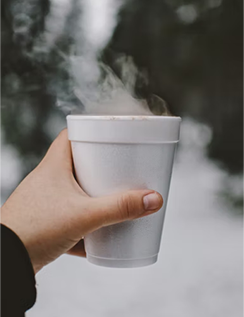
It’s effective for keeping cold or hot items cold or hot, but it’s not particularly sturdy and easily crushed, resulting in leaks. Because it is not biodegradable, styrofoam is also bad for the environment.
Kraft Paper & Cardboard
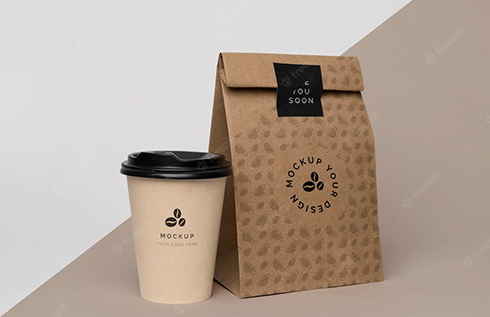
Paper and paperboard are commonly used to wrap dry items. It’s biodegradable, making it a more environmentally friendly alternative. However, it does not insulate well and is not resistant to most meals. Pizza and other similar foods are best served in cardboard boxes.
After coating or waxing, they can be used to pack and serve wet and fatty foods. They’re used in corrugated boxes, milk cartons, folding cartons, paper plates and cups, bags and sacks, and wrapping paper, to name a few.
Paper food delivery containers are one of the best materials for enclosing and protecting food for a short period of time. When used as the principal package, waxes, resins, and lacquers are employed as coatings and laminates to increase the paper’s defensive and operational properties.
Plastic
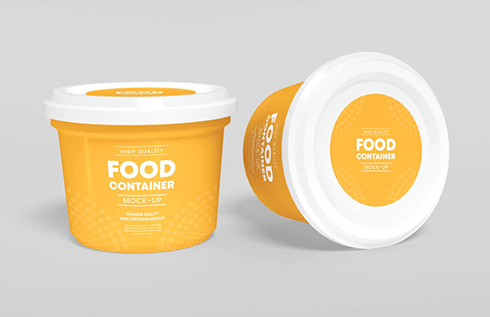
It’s as popular as it is affordable and long-lasting. It is not biodegradable, however, and when discarded, it can leach poisons into your food or the environment.
Aluminum Foil
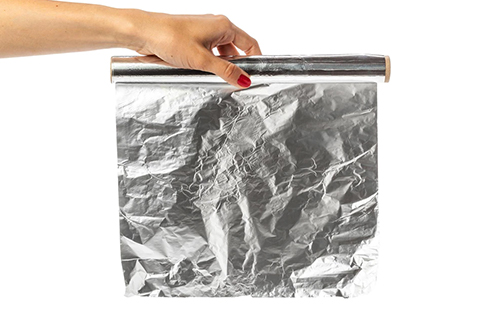
Aluminum is used to make beverage cans, wrappings, tubes, platters, sachets, and coffee capsules.
It has high-temperature resistance and acts as an excellent gas barrier, increasing the food’s shelf life. It’s quite pliable and formable and embossing it is straightforward. It’s quite harmless, light, and indefinitely reusable.
Aluminum alloying metals like magnesium and manganese are periodically added to boost their strength.
Aluminum packaging can be rigid, flexible, or semi-flexible. It shields meals from radiation, air, moisture, oils, and pathogens while maintaining their freshness and aroma. Soft drinks, seafood, and pet food are frequently packaged in aluminum.
Bamboo Fiber Containers
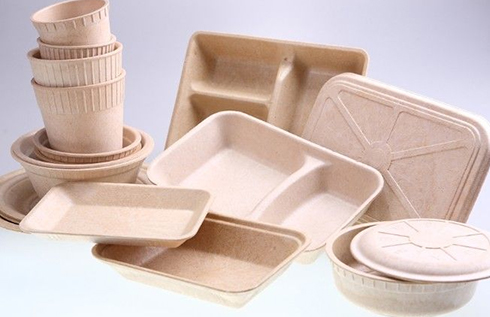
Bamboo is biodegradable and has a variety of characteristics that make it perfect for food packaging, including heat resistance and durability.
Bamboo-based food packaging includes tabletop glass containers with bamboo lids, portable plastic-free lunch boxes with bamboo covers, bamboo bread boxes, and bamboo serving bowls.
Keep in mind that food containers made of bamboo or other plant fibers are less durable and more prone to wear and tear than glass or stainless steel.
For Different Food Types
Soft Drink/Beverage
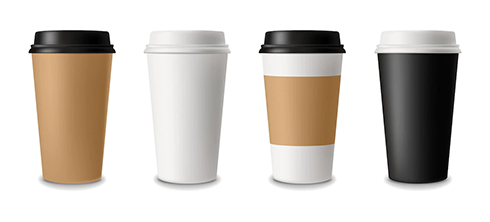
People frequently purchase beverages to go with their take-out cuisine. It is critical to keep cold and hot objects apart. Nobody likes a hot beverage or food that has cooled after being near an iced drink.
Drinks should be kept separate and secured for transport with tight lids and a drink carrier. You don’t want the drink to leak and damage the meal while it’s in transit. When packing a frozen beverage, such as a milkshake, use an insulating bag and cool packs to keep the liquid cold.
Beverages are frequently served with meal orders. Fill the insulated bag with gel packs if you’re delivering cold drinks to help keep the temperature stable. Spilled beverages damage, not just the package but also the entire meal. Use spill-proof cups and containers wherever possible.
Fast Food
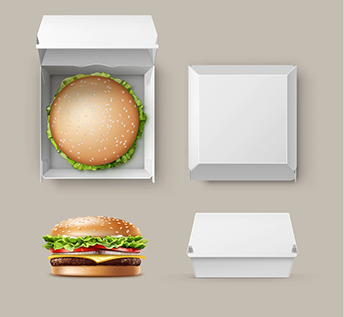
To ensure success, keep hot and cold objects apart. If you’re going to package anything crispy and fried, attempt to do it as the consumer picks it up. This will keep the sharpness. Also, use a to-go box with some ventilation to prevent the steam from making the fried food soggy.
Separate heated meals from frozen treats such as ice creams and yogurts, as well as cold drinks. If your order includes soup or sauce, place it in a separate container. To guarantee that the lid does not fall off in shipment, seal each container with tape for added safety.
Hot Soup/Congee/Porridge
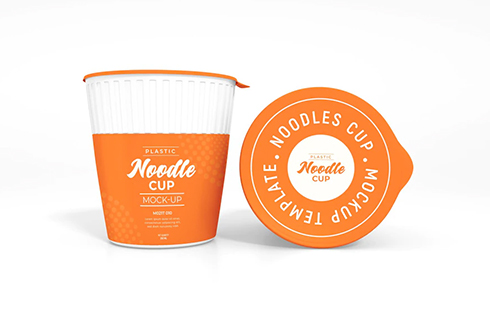
When packing hot, cooked meals, it’s critical to keep the food hot from the moment it’s produced until it’s delivered to the consumer. Meals safety and consumer satisfaction are both dependent on keeping food hot. Make sure your food is properly packaged and kept warm until it is picked up. Keep in mind that the less time your meal sits around, the better.
Place your food in a container that is the right size for it. Then, using strips of tape, close the lids to ensure that they are secure, preventing any transit mishaps. Wrap the container with foil to better seal the sauce if you’re packing a sauce-based dish.
Dessert/Cake
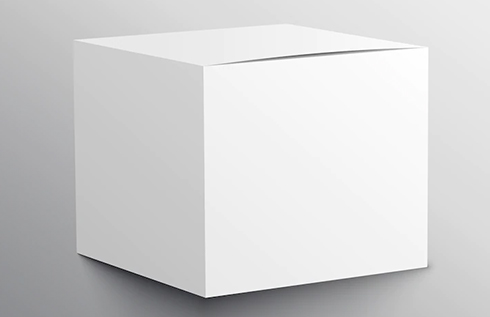
On-demand cake delivery is a popular service since it saves bakeries and pastry shops the trouble of delivering their cakes themselves or investing in a cake delivery truck. The only difficulty is that once your cake leaves your bakery, you no longer have control over it.
It will arrive at its destination in fine shape if it is properly packed! If your custom cake has heavy decorations that might be damaged in transit, store them in a separate container and include detailed instructions on how to assemble them.
You may travel tiered cakes by removing the layers and assembling them when they arrive. To protect the edges of smaller cakes from being damaged, fasten the base within the box.
Yogurt/Ice Cream
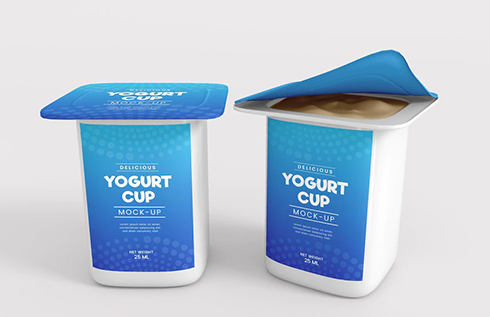
Keep frozen items apart from hot meals, as previously stated. Frozen meals should be stored in an insulated bag. You may use dry ice or ice packs to keep your object thoroughly frozen. If you decide to use dry ice, make sure you take the necessary precautions.
Keep in mind that, while beneficial, dry ice is a dangerous item. Before using any type of ice pack, ensure sure it is not malfunctioning or leaking; you don’t want any chemicals to make their way into the meal.
Frozen food needs a bit more work to deliver than other foods. For instance, whether it’s a styrofoam box or a delivery bag, you’ll need an insulated container. You can use dry ice, air-filled insulated liners, or the regularly used ice packs to assist maintain the frigid temperature.
Keep in mind that dry ice is a potentially hazardous substance, so proceed with caution. If you’re going to store it in a cooler, be sure it has adequate ventilation. Dry ice may grow and, in rare situations, explode if this is not done. Make sure your frozen and perishable foods aren’t in direct touch with cooling agents.
Fruit & Salad
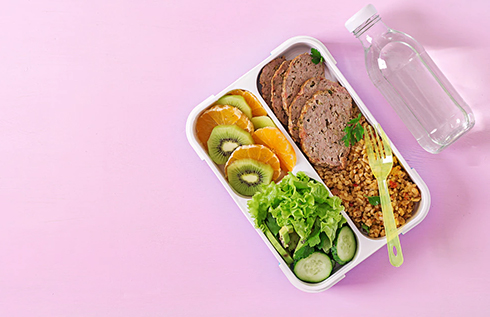
Fruits and vegetables, in comparison to other perishable foods, have a longer shelf life. For modest orders, keep things in shrinkwrap or plastic bags. Using wooden hampers or palette bins for heavier goods should suffice.
Remember to identify each bag or container with the ‘best before date and the amount of food it contains. Couriers will know which machine to use to carry it in this manner.
Tips on How to Choose the Best Packaging Solution
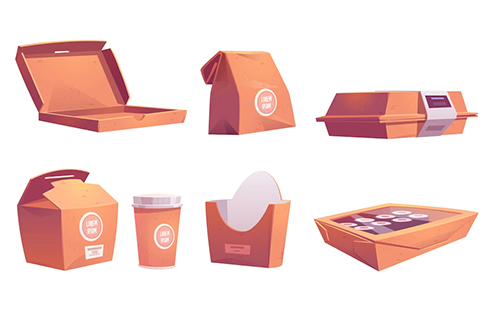
When you don’t pack your food properly, it might be rather difficult to deliver it. When delivering food, your top responsibility is to maintain your products pleasant, fresh, and free of damage or spills.
That’s why it’s critical to consider all aspects of the delivery process, from material selection to ensure that you stay practical and cost-effective. You are assuring clients that your company delivers exceptional service in every area by taking the time to figure out the best method to pack your delivery.
Here are a few tips on how you can choose the best packaging solution:
- To keep the meals safe, choose a tamper-proof packing material.
- To keep the beverages from spilling, use tight-fitting lids.
- Food packaging must be cost-effective and functional, but the presentation of the food must also meet customer expectations and deliver a pleasurable experience.
- Portability, resealability, multipurpose usage, and other factors should all be considered while designing food packaging.
Improper packaging might detract from the appeal of the product. Aside from making the food seem appealing, food packaging also protects the food from contamination, maintains its temperature, and protects it from damage during delivery.
In a nutshell, packaging establishes a link between a food brand and its target audience. It creates a lasting impression on their minds. If not now, it encourages customers to purchase at a later date. Packaging enhances the flavor of the meal. It allows you to win half of the battle: better-looking food tastes even better. That’s how powerful it is!
If clients discover food spilled all over the package after delivery, he is displeased. As a result, delivery packing is extremely crucial. It protects and secures the merchandise till it is delivered. It draws clients and motivates them to purchase the product, as previously said.
Overall, you should not pass up this fantastic opportunity to provide quality to your customers through packaging if they have ordered food from your place and urge them to buy from you again.
Consider investing in high-quality, long-lasting food delivery packaging. Bioplastic, which is derived from sustainable biomass, might be an excellent choice for packaging dry or fatty foods. Sustainable food packaging is a great approach to improving your customer’s experience while also communicating your environmental concerns.
Meal packaging has evolved into an effective tool for delivery-only restaurant operators to improve the customer’s food delivery experience at their doorstep.
Your consumers will appreciate the convenience of your delivery service if you use the correct packing. Choose the correct packaging materials and make smart design decisions to improve your consumers’ experience and brand recall value.
To guarantee that the food you serve looks as wonderful as it tastes, follow these guidelines for food delivery packaging.
Conclusion
You’ve now learned everything there is to know about properly packing food for delivery from a restaurant. Remember to package your food with extreme caution. The better you package your food, the better it will be received. After all, you’ve worked hard to prepare delectable and gorgeous dishes.
You should make every effort to ensure that the consumer receives them in the same state in which you generated them, rather than a sloppy pile. Customers will be raving about the quality of your delivery service in no time if you take care with your food packing.
You can always contact YoonPak for all your food packaging needs.







